A Brief History of Bicycles Through WWII
This article relates to The Undertow

In The Undertow, the second-generation Billy Hastings makes a name for himself as a racing cyclist in the years between World War I and World War II and goes on to serve in a vital detachment of bicycle soldiers on D-Day in 1944. Bicycle racing had already accumulated a long history by the 1920s and military groups all over the world, such as the British Cyclist Divisions, experimented with bicycle infantry, ambulance transporters, messengers and scouts. (Bicycles were more affordable than horses, and they reduced the need for fuel used by motorized vehicles.) Here are a few significant turning points in the chronology of bicycle history:
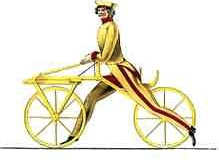
- 1817: Baron Karl von Drais of Germany invents an early bicycle prototype he calls a laufmaschine ("walking machine" - which later becomes known as a "draisine" in honor of the baron). The machine has wheels and handlebars, but no pedals, and is maneuvered by pushing the feet against the ground.
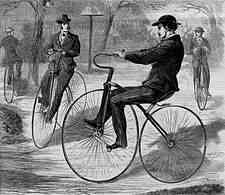
- 1865: Pedals appear, and the draisine evolves into a velocipede - any human-powered land vehicle with more than one wheel - with a wooden frame and solid tires made of metal or rubber. The ride is jarring, and the machines come to be called "boneshakers." More comfortable riding could be practiced at smooth-floored indoor riding academies, however.
- 1868: The first recorded bike race takes place in the Parc de Saint-Cloud in Paris. The race was 1.2 kilometers long and was won by Englishman James Moore.
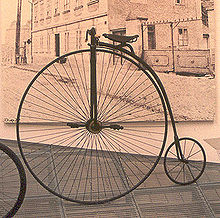
- 1870s: Advances in technology allow for the first metal-frame bikes, and "high-wheelers" appear. Pedals are attached directly to a large front wheel, which translates into more motion for each revolution of the pedal. As a consequence, people can move at faster speeds. Falls from the high seats, however, are often disastrous. Still, cycling as a hobby and a sport arrives.
- 1881: Grueling "six-day racing" grows in popularity in England and America, whereby a single rider or a pair of riders circle a track for six days or until a collapse. The sport is outlawed in both countries within a few years because it is so dangerous.
- 1889: The invention of pneumatic tires - tires made of reinforced rubber and filled with air - changes bike racing forever. Two-wheeled "safety bikes" evolve into lighter bikes with chain and sprocket technology, and the era of high-wheelers comes to an end.
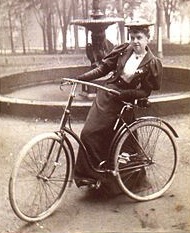
- 1896: The first bicycle road event in Olympic history takes place. Meanwhile, women are discovering the freewheeling ease of cycling. Susan B. Anthony writes that "the bicycle has done more for the emancipation of women than anything else in the world."
- 1903: The first Tour de France road race is held as a promotion for a sports newspaper. The prize money totals a whopping 20,000 francs (12,000 for first place, which is approximately six times what a factory worker would have made in a year). A similar race in Italy, the Giro d'Italia, begins a few years later.
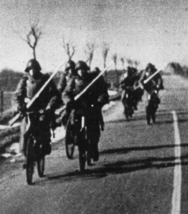
- 1914: During World War I, armies on both sides continue to make use of bicycles for light infantry and messengers. Bikes have the advantage of being light and fast, and do not require the upkeep of cavalry horses.
- 1940s: Japan makes extensive use of bicycles during its campaigns in Asia prior to and during World War II. Allied forces begin to use bike troops less and less as mechanized transport becomes a faster, more protective option.
Filed under Cultural Curiosities
 This "beyond the book article" relates to The Undertow. It originally ran in June 2012 and has been updated for the
December 2012 paperback edition.
Go to magazine.
This "beyond the book article" relates to The Undertow. It originally ran in June 2012 and has been updated for the
December 2012 paperback edition.
Go to magazine.
This review is available to non-members for a limited time. For full access become a member today.
Membership Advantages
- Reviews
- "Beyond the Book" articles
- Free books to read and review (US only)
- Find books by time period, setting & theme
- Read-alike suggestions by book and author
- Book club discussions
- and much more!
-
Just $45 for 12 months or
$15 for 3 months.
- More about membership!

 Book Reviewed by:
Book Reviewed by:




![]() This "beyond the book article" relates to The Undertow. It originally ran in June 2012 and has been updated for the
December 2012 paperback edition.
Go to magazine.
This "beyond the book article" relates to The Undertow. It originally ran in June 2012 and has been updated for the
December 2012 paperback edition.
Go to magazine.




